
TALANTA
Scope & Guideline
Catalyzing Progress in the World of Chemical Analysis
Introduction
Aims and Scopes
- Analytical Method Development:
Research on creating and optimizing new analytical techniques for the detection and quantification of various analytes in complex matrices. - Biosensors and Bioanalytical Techniques:
Studies focused on the design and application of biosensors, including electrochemical, optical, and mass spectrometric methods for detecting biological markers. - Nanotechnology in Sensing:
Utilization of nanomaterials and nanostructures to enhance the sensitivity and selectivity of sensors for environmental and clinical applications. - Environmental Monitoring:
Research dedicated to the detection and analysis of pollutants, toxins, and other hazardous substances in environmental samples. - Food Safety and Quality Control:
Development of methods for the detection of contaminants, preservatives, and nutritional components in food products. - Biomedical Applications:
Application of analytical techniques in the diagnosis and monitoring of diseases, including cancer biomarkers and infectious diseases. - Material Science Innovations:
Research on new materials, such as metal-organic frameworks and conductive polymers, and their applications in sensor technology.
Trending and Emerging
- CRISPR/Cas-Based Detection Techniques:
There is a growing trend towards using CRISPR/Cas technology for sensitive and specific detection of nucleic acids and proteins, showcasing its potential in diagnostics. - Portable and Point-of-Care Biosensing:
Research on portable biosensing devices that allow for on-site testing and real-time monitoring of health markers has gained momentum, particularly in response to the COVID-19 pandemic. - Nanomaterial-Enhanced Sensing:
The integration of nanomaterials, such as metal-organic frameworks and carbon dots, into sensing platforms has become a prominent theme, enhancing sensitivity and selectivity. - Machine Learning and AI in Analytical Chemistry:
The application of machine learning and artificial intelligence for data analysis, pattern recognition, and predictive modeling in analytical methods is rapidly gaining traction. - Sustainable Analytical Practices:
Research focusing on green chemistry approaches, such as the use of deep eutectic solvents and environmentally friendly extraction methods, is increasingly prevalent. - Multi-Modal Detection Systems:
The development of sensors that combine multiple detection modalities (e.g., electrochemical, optical, and mass spectrometric) for comprehensive analysis is on the rise. - Microfluidic Technologies:
Innovations in microfluidic devices for high-throughput analysis and rapid diagnostics are becoming a significant area of research, enhancing the efficiency of sample processing.
Declining or Waning
- Traditional Chromatography Techniques:
There has been a noticeable decrease in the publication of studies focused solely on traditional chromatography methods, as newer, more innovative techniques gain traction. - Basic Spectroscopic Techniques:
Research articles that primarily discuss conventional spectroscopic methods without significant advancements or novel applications are becoming less frequent. - Generalized Sensor Technologies:
Publications that do not incorporate novel materials or unique methodologies in sensor development are declining, as the field moves towards more specialized and sophisticated approaches. - Single-Use Analytical Devices:
The focus on simple, single-use devices for analysis is waning as there is a growing interest in more sustainable, reusable, and multifunctional analytical platforms. - General Environmental Analysis:
Research that does not specifically address emerging contaminants or novel detection methods in environmental monitoring is becoming less common.
Similar Journals

Brazilian Journal of Analytical Chemistry
Advancing Analytical Insights in Latin AmericaBrazilian Journal of Analytical Chemistry, published by VISAO FOKKA COMMUNICATION AGENCY, serves as a vital platform for those engaged in the field of analytical chemistry, especially within the Latin American context. With an ISSN of 2179-3425 and an E-ISSN of 2179-3433, this journal aims to promote high-quality research and advancements in analytical methodologies, instrumentation, and applications spanning from 2010 to the present. Although it currently holds a Q4 rank in Analytical Chemistry by Scopus and is placed at the 24th percentile, its commitment to open access publishing provides invaluable opportunities for widespread dissemination of knowledge, catering to researchers, professionals, and students alike. The journal's editorial board comprises emerging and established experts aiming to bridge gaps in analytical chemistry research, particularly in a Brazilian and broader South American context. Situated in São Paulo, Brazil, the journal's role in fostering innovation and collaboration in analytical techniques makes it an essential resource for the academic community.
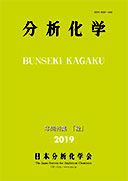
BUNSEKI KAGAKU
Exploring the Depths of Analytical TechniquesBUNSEKI KAGAKU, published by the Japan Society Analytical Chemistry, is a reputable journal dedicated to the field of analytical chemistry. With an ISSN of 0525-1931, this journal has been a crucial outlet for scholarly communication since its inception in 1952, converging its publication years from 1954 to 1957 and from 1959 to 2024. Although it holds a Q4 category ranking in the most recent 2023 quartiles of analytical chemistry and ranks 153/156 in Scopus, it continues to serve as a platform for quality research, fostering advancements in the field. BUNSEKI KAGAKU is based in Tokyo, Japan, and emphasizes the critical importance of analytical techniques in scientific inquiry. With a commitment to professionalism and rigor, the journal provides a vital resource for researchers, students, and professionals seeking to explore innovative methodologies and contribute to the ongoing dialogue in analytical chemistry.
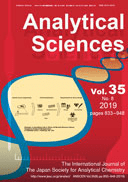
ANALYTICAL SCIENCES
Advancing the Frontiers of Analytical ChemistryANALYTICAL SCIENCES, published by SPRINGERNATURE, is a prestigious journal established in 1985 dedicated to advancing the field of analytical chemistry. With an ISSN of 0910-6340 and an E-ISSN of 1348-2246, this journal plays a critical role in disseminating high-quality research and innovative methodologies. Operating from Switzerland, it aims to provide a platform for scholars, researchers, and professionals to explore significant developments and applications in analytical techniques. Although classified in the third quartile (Q3) of analytical chemistry, which places it in a competitive framework (Rank #96/156, 38th Percentile in Scopus), its impact on the discipline is noteworthy. While it is not currently an open-access journal, the resources within are invaluable for those seeking to stay at the forefront of research and practice in analytical sciences, making it an essential read for anyone involved in this dynamic field. The journal continues to converge critical insights from 1985 to 2024, fostering a community dedicated to innovation and excellence in analytical chemistry.

Biosensors-Basel
Fostering collaboration in the world of biosensors.Biosensors-Basel is a premier Open Access journal, published by MDPI since 2011, dedicated to advancing the field of biosensors and related technologies. With its academic headquarters in Basel, Switzerland, the journal serves as a vital resource for researchers, professionals, and students across various disciplines, including Analytical Chemistry, Biomedical Engineering, Biotechnology, and Clinical Biochemistry. Boasting an impressive range of quartile rankings—such as Q1 in Instrumentation and Q2 across several other categories—Biosensors-Basel is recognized for its high-impact research and significant contributions to the scientific community, evidenced by Scopus rankings that place it among the top journals in its field. The journal's open-access model ensures that cutting-edge findings are accessible to a global audience, promoting collaboration and innovation in biosensor technology and its applications. Scholars and professionals looking to stay on the forefront of this dynamic field will find Biosensors-Basel an indispensable platform for sharing knowledge and fostering advancements.
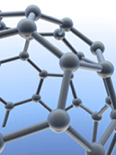
Annual Review of Analytical Chemistry
Transforming Knowledge into Analytical ExcellenceAnnual Review of Analytical Chemistry, published by Annual Reviews, is a premier journal that serves as a critical resource in the field of analytical chemistry, providing comprehensive and cutting-edge reviews that synthesize recent advancements and pivotal research findings. With an impressive impact factor and ranked Q1 in both Analytical Chemistry and Miscellaneous Medicine, it stands as a leader in disseminating knowledge that spans the intricacies of chemical analysis, enhancing the scientific discourse within the community. Available in both print (ISSN: 1936-1327) and online (E-ISSN: 1936-1335), the journal is accessible to a wide audience, fostering innovation and collaboration among researchers, professionals, and students alike. Its scope includes the converged years from 2008 to 2024, showcasing its commitment to providing relevant and timely insights that impact practice and education in analytical techniques, methodologies, and applications. The Scopus rank of #6 out of 156 in Analytical Chemistry, placing it in the 96th percentile, underscores its significance and the high regard in which it is held. As you explore the journal's offerings, you will find a wealth of knowledge that not only informs but inspires future discoveries in the realm of analytical chemistry.

Talanta Open
Empowering Research, Elevating KnowledgeTalanta Open (ISSN: 2666-8319) is a prominent open-access journal published by Elsevier, dedicated to advancing the field of Analytical Chemistry. Established in 2020, the journal aims to foster innovative research and facilitate knowledge sharing in the analysis of chemical substances and their interactions. With an impressive Q2 ranking in the Analytical Chemistry category and a commendable Scopus ranking of #57/156, Talanta Open has quickly established itself as a vital resource for researchers, professionals, and students alike. The journal is known for its rigorous peer-review process and commitment to quality, ensuring that published content significantly contributes to the scientific community. By providing unrestricted access to high-quality research, Talanta Open underscores the importance of collaboration and accessibility in the ever-evolving landscape of analytical science.

CHEMICAL RESEARCH IN CHINESE UNIVERSITIES
Highlighting Breakthroughs in Chemical SciencesCHEMICAL RESEARCH IN CHINESE UNIVERSITIES is a prominent academic journal dedicated to the dissemination of high-quality research in the field of chemistry and related educational methodologies. Published by HIGHER EDUCATION PRESS, this journal has established itself as a vital resource for researchers and professionals looking to stay at the forefront of chemical sciences. With an impressive impact factor and ranked in the Q2 quartile for both Chemistry and Education categories, it highlights significant advancements while maintaining rigorous peer-review standards. The journal's ISSN is 1005-9040 and its E-ISSN is 2210-3171, ensuring broad accessibility to its global readership. Although it does not offer open access, its contributions are vital to understanding the dynamics of chemistry research and education within and beyond China. With converged publication years from 1999 through to 2024, CHEMICAL RESEARCH IN CHINESE UNIVERSITIES continues to be an essential platform for innovative studies and critical discussions in the expanding realm of chemistry.
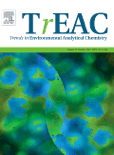
Trends in Environmental Analytical Chemistry
Navigating the Future of Environmental ChemistryTrends in Environmental Analytical Chemistry, published by Elsevier, serves as a leading platform for scholars and professionals in the fields of analytical and environmental chemistry. With an impact factor that places it in the Q1 category for both analytical chemistry and environmental chemistry, this journal attracts cutting-edge research that addresses current challenges in environmental analysis from 2014 to 2024. The journal is dedicated to advancing the knowledge base through the publication of high-quality empirical studies, innovative methodologies, and comprehensive reviews that reflect the latest trends and technological advances in the field. Operating out of the Netherlands, the journal's commitment to excellence is evident in its impressive Scopus rankings, standing as the #1 journal in Analytical Chemistry and #7 in Environmental Chemistry by percentiles. This makes it an essential resource for academics, practitioners, and students alike who are eager to stay informed on impactful environmental research and analytical techniques.
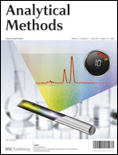
Analytical Methods
Innovating Methodologies for a Brighter TomorrowAnalytical Methods, published by the renowned Royal Society of Chemistry, is a distinguished journal that has been serving the scientific community since its inception in 2009. Specializing in the fields of Analytical Chemistry, Chemical Engineering, and General Engineering, this journal holds a reputable position with an impressive Q2 ranking in three relevant categories as of 2023. With its focus on innovative methodologies and advanced applications in analytical science, it aims to disseminate cutting-edge research and foster dialogue among researchers, professionals, and students. Although it is not an open access publication, it is accessible worldwide and provides critical insights into the latest developments in analytical techniques and their engineering applications. The journal also ranks highly in pertinent Scopus categories, such as being in the 77th percentile for General Engineering and 61st percentile for Analytical Chemistry, underlining its significance in advancing knowledge and practical applications in these fields. By participating in this journal, readers can expect to engage with high-quality research that influences the future of analytical practices and chemical engineering.
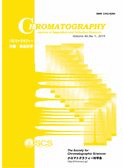
Chromatography
Exploring the frontiers of chromatography and its applications.Chromatography is an esteemed journal published by the SOC CHROMATOGRAPHIC SCIENCES, dedicated to advancing the field of chromatographic techniques and their applications across various disciplines, including analytical chemistry, biochemistry, and environmental science. By facilitating the exchange of high-quality research, Chromatography plays a pivotal role in enhancing methodologies and technologies that drive innovation in sample analysis. While the journal is not currently open access, it maintains a rigorous peer-review process, ensuring the publication of valuable and impactful studies. Researchers, professionals, and students alike can benefit from its comprehensive coverage of chromatography-related advancements, making it a vital resource for anyone engaged in this dynamic area of study.